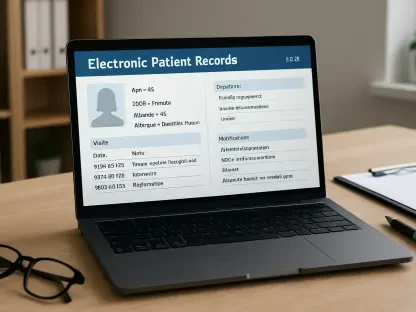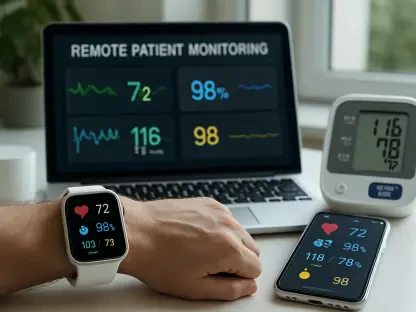In today’s conversation, we delve into the intersection of telehealth and healthcare policy with James Maitland, an eminent figure in the field of robotics and IoT applications in medicine. As the landscape of remote healthcare evolves, over 200 organizations have recently pushed the DEA to ensure patients continue receiving necessary prescriptions remotely. James provides expert insights into the nuances of these regulations and their implications for both patients and providers.
What prompted the more than 200 organizations to write a letter to the DEA?
The drive behind this collective action stems from the imminent expiration of pandemic-era flexibilities. These organizations see the need for a structured plan to be in place before these flexibilities lapse, to ensure uninterrupted access to crucial remote healthcare services. This proactive approach is about safeguarding patient care continuity in a transitional regulatory landscape.
Could you elaborate on the specific flexibilities that were put in place during the COVID-19 pandemic regarding telehealth prescriptions of controlled substances?
During the pandemic, there was an urgent need to maintain patient access to healthcare services while minimizing the need for in-person visits. As a result, exceptions were made to existing laws, allowing healthcare providers to prescribe controlled substances without requiring an initial in-person consultation. This was crucial for patients, especially those with mobility challenges or residing in remote areas.
How have these flexibilities impacted patients, especially those in rural or underserved areas?
The impact has been significant, particularly in rural and underserved areas where healthcare access is often limited. Patients could receive necessary prescriptions without the burden of traveling long distances to see a healthcare provider. This model has been especially beneficial for mental health care, where the availability of specialists is sparse, enabling patients to receive care more consistently and promptly.
Can you explain the concerns the telehealth and provider organizations have regarding the expiration of these flexibilities by the end of the year?
The primary concern is that if these flexibilities expire without a viable new policy in place, many patients will lose access to essential medications. This could potentially lead to a gap in care and a deterioration of health conditions for those who have come to rely on telehealth services. There’s anxiety around returning to a more restrictive framework that doesn’t accommodate the advances made in telehealth accessibility.
What are the main critiques of the proposed framework by the Biden administration for telehealth prescriptions? Why is it considered too onerous?
Critics argue that the framework imposes extensive burdens on healthcare providers, making compliance challenging. The proposed rules necessitate checking state drug monitoring databases and impose additional documentation requirements that could strain providers’ resources. Such measures may deter providers from offering telehealth services, ultimately narrowing patient access to care.
How does the DEA plan to balance the need for patient access with preventing improper dispensing of prescription drugs?
The DEA is attempting to find a middle ground by crafting rules that maintain patient access while instituting safeguards against drug misuse. This includes proposals for special registrations and stricter checks, like consulting state drug monitoring systems, to ensure prescriptions are appropriate and to mitigate the risk of diversion or misuse of controlled substances.
Could you provide insight into the unintended consequences that have arisen from past regulatory efforts regarding telehealth prescriptions?
Previous regulatory efforts that didn’t incorporate broad stakeholder engagement often resulted in creating cumbersome processes. These included excessive administrative burdens that overwhelmed healthcare systems and providers, leading to logistical challenges and inadvertently restricting patient access to timely and necessary care.
How have some telehealth companies allegedly misused the current flexibilities, and what specific issues have regulators identified?
Some telehealth companies have faced accusations of exploiting the relaxed regulations to boost prescriptions, even in cases where patients did not meet the necessary criteria. Regulators have identified issues with aggressive commercial practices, which sometimes prioritized company revenues over patient safety, thereby warranting closer scrutiny and prescribed penalties.
What is the significance of the DEA’s proposed regulation for special registrations in terms of prescribing Schedule II to Schedule V drugs?
This proposed regulation aims to delineate and formalize a pathway for providers to prescribe a broad range of controlled substances, from Schedule II to V, under specific conditions. It’s a strategic move to extend telehealth capabilities while ensuring controls are in place to prevent abuse, thus emphasizing the DEA’s dual focus on access and accountability.
What are the telehealth groups’ primary concerns about the DEA’s proposal to require clinicians to check state drug monitoring databases?
The primary concern is that this requirement adds an additional layer of complexity and administrative load on clinicians. For many providers, especially those in smaller practices, the time and resources needed to comply with these checks can be prohibitive, potentially discouraging the use of telehealth for controlled substance prescribing.
How might limitations on Schedule II prescriptions affect patients who rely on telehealth services for their medication needs?
Limitations on these prescriptions could severely restrict patients who rely on telehealth for chronic conditions requiring consistent medication management. These patients may face delays or need to engage in additional in-person consultations, which could disrupt their treatment regimens, particularly for those in remote areas with limited healthcare access.
Discuss the proposal to allow DEA-registered clinicians to prescribe buprenorphine via telehealth. What are its implications for treating opioid use disorder?
Allowing the prescription of buprenorphine via telehealth is pivotal for expanding treatment access for opioid use disorder, particularly in areas with limited specialist care. It enables timely intervention without the constraints of geographical barriers, facilitating ongoing care management and potentially reducing rates of relapse due to easier access to medication-assisted treatment.
Why has the enforcement of the regulation around buprenorphine prescribing via telehealth been delayed?
The delay is likely due to a need for further refinement in regulatory frameworks to address concerns raised by stakeholders, including ensuring a balance between accessibility and preventing misuse. The extension period provides additional time for incorporating feedback and refining the approach to ensure it is robust and broadly acceptable.
Can you describe the stakeholders involved in shaping policy on virtual prescribing? How are they working with the DEA to ensure equitable access to telehealth services?
Stakeholders include telehealth advocacy groups, medical associations, policymakers, and patient advocacy organizations. These groups collaborate with the DEA to voice concerns, provide insights from frontline experiences, and suggest practical solutions. Their involvement is crucial in advocating for policies that ensure equitable and sustainable access to telehealth services while maintaining regulatory accountability.
What steps do telehealth advocates believe should be taken to create a permanent policy for remote prescriptions of controlled substances?
Telehealth advocates suggest that any permanent policy should recognize the advancements made in telehealth, incorporate stakeholder feedback, and maintain patient-centric approaches. There’s a call for creating streamlined processes that ensure safety and compliance without stifling innovation. Advocates emphasize the necessity for flexible yet secure systems that adapt to changing healthcare delivery models.
What is your forecast for the future of telehealth regulations in the context of controlled substance prescriptions?
Looking ahead, there will likely be a push towards crafting regulations that are flexible enough to accommodate evolving technological advances while being stringent enough to prevent misuse. The future is a balancing act of facilitating access and ensuring robust oversight, which will necessitate ongoing dialogue between stakeholders to enable a framework that is resilient and adaptive.









